You might have heard of the Inverted Hammer, Bearish Marubozu, or Gravestone Doji when it comes to candlestick patterns in the stock market.
But do you know how recognizing these patterns can significantly impact your trading decisions and outcomes?
Understanding the intricacies of these 10 best candlestick patterns can provide you with a competitive edge in the market.
By deciphering the signals they convey, you can potentially unlock opportunities to optimize your trades and navigate the stock market with greater precision.
Inverted Hammer
When analyzing candlestick patterns for stock market success, one encounters the Inverted Hammer, a bullish reversal pattern signaling a potential price upswing. This pattern often appears at the end of a downtrend, indicating a possible shift towards an upward trend.
The Inverted Hammer is characterized by a small body with a long upper shadow, resembling a hammer flipped upside down. Traders typically seek confirmation in the form of the following candle to validate the bullish reversal signal provided by the Inverted Hammer.
With a success rate of around 60% and an average profit per trade of 1.12%, this pattern is valued by traders for its ability to forecast potential price increases and trend reversals in the stock market.
Bearish Marubozu
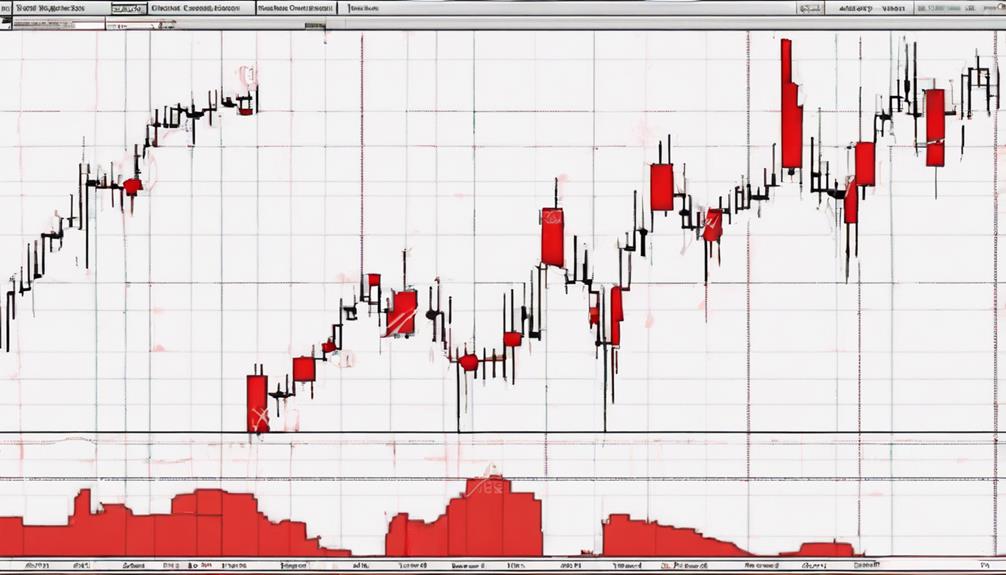
The Bearish Marubozu pattern, characterized by a single candlestick opening at the high and closing at the low, signifies significant selling pressure in the market. This single candlestick pattern with no upper shadow and a long black body indicates a bearish trend continuation.
With a success rate of around 56.1% and an average profit per trade of 0.80%, the Bearish Marubozu is valuable for spotting bearish sentiment. Traders often seek confirmation in subsequent candles to make effective trading decisions based on this pattern.
Understanding the implications of the Bearish Marubozu can help you identify potential opportunities in the market and align your strategies for better outcomes.
Gravestone Doji
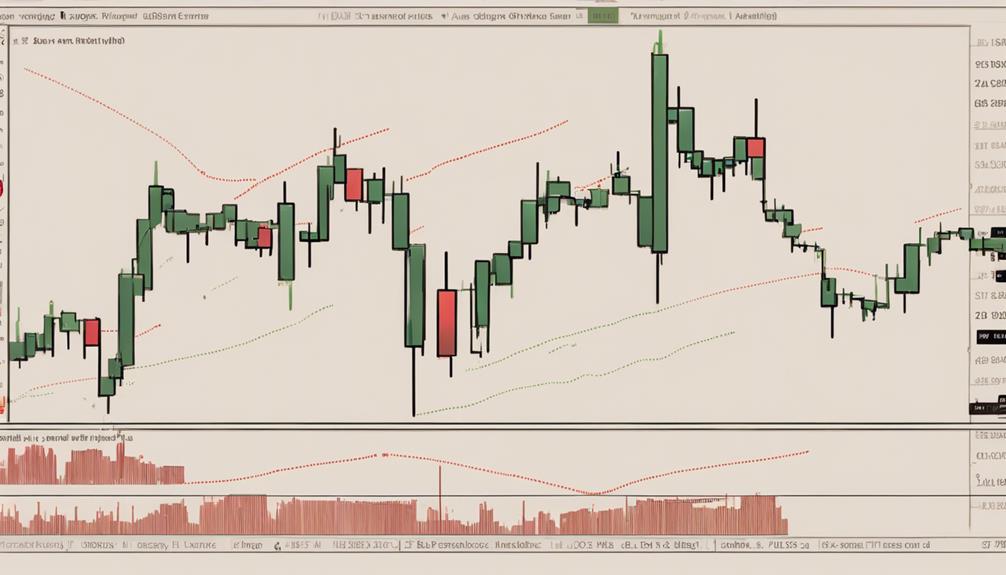
When analyzing the Gravestone Doji in trading, keep in mind its significance as a bearish reversal signal. This pattern suggests a potential shift from a bullish to a bearish trend, particularly when observed after an uptrend.
Traders often look for confirmation from subsequent candlesticks to validate the potential reversal indicated by the Gravestone Doji.
Meaning of Gravestone Doji
Indicating potential trend reversals in the stock market, the Gravestone Doji is a candlestick pattern characterized by open and close prices near the day's low, accompanied by a long upper shadow. This pattern suggests that while buyers initially pushed prices higher, sellers managed to regain control by the close, potentially signaling weakness or resistance in the stock's price movement.
Traders often look to the Gravestone Doji as a warning sign for a possible shift in market sentiment. However, it's essential to wait for confirmation from the next trading day to validate the pattern before making any trading decisions. Understanding the implications of the Gravestone Doji can help you anticipate changes in stock prices and make informed investment choices.
Interpretation in Trading
Pivoting from the significance of the Gravestone Doji after an uptrend, traders keenly analyze this candlestick pattern for potential bearish reversals in stock market trading. This pattern, characterized by a long upper shadow and a close near the low of the session, hints at a shift from buyer to seller control. To confirm the bearish reversal signal, traders often wait for the next candle for validation.
The Gravestone Doji holds more weight when spotted after a sustained uptrend, indicating a possible trend change to the downside in the stock market. Understanding the interpretation of this candlestick pattern is crucial for traders looking to anticipate and capitalize on potential price movements in the market.
Bearish Engulfing
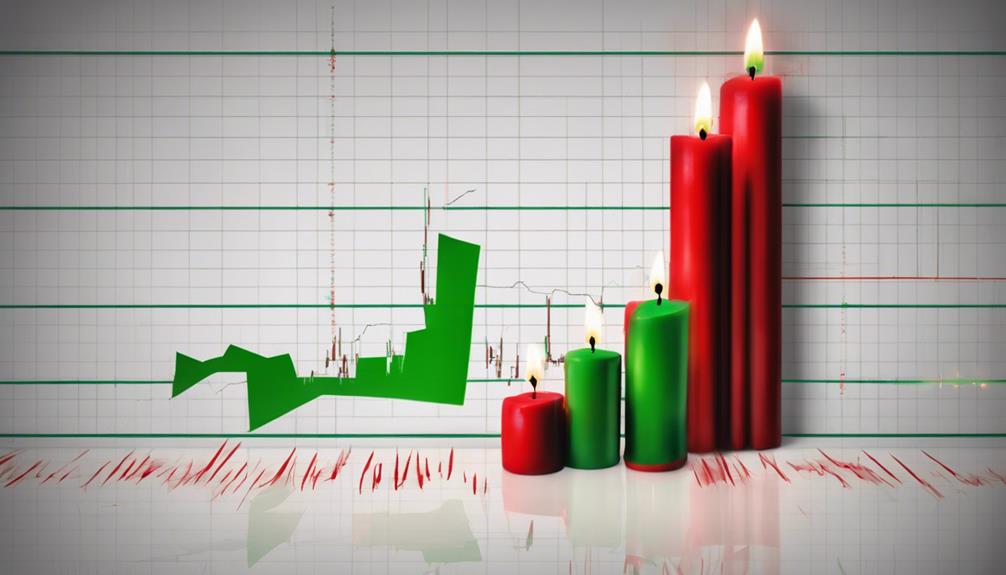
When analyzing Bearish Engulfing patterns, it's crucial to note that the second candle completely engulfs the previous one, suggesting a potential reversal.
Recognizing this pattern at the end of an uptrend can provide valuable insights into shifting market sentiment.
Traders often wait for a confirming candle to validate the bearish engulfing signal, indicating a strong momentum change from bullish to bearish.
Bearish Engulfing Meaning
Understanding the Bearish Engulfing pattern is crucial for identifying potential trend reversals in the stock market. This bearish reversal signal suggests a shift from bullish to bearish sentiment, indicating that sellers have gained control over buyers.
Traders pay attention to the volume associated with the pattern, as a higher volume on the engulfing candle strengthens the reversal signal. Confirmation of the pattern often comes with a subsequent bearish candle, solidifying the potential downtrend.
Bearish Engulfing patterns are frequently utilized by traders in technical analysis to pinpoint selling opportunities in the stock market. By recognizing and interpreting the Bearish Engulfing pattern correctly, investors can strategically position themselves to capitalize on potential downward movements in stock prices.
Recognizing Bearish Engulfing
To identify the Bearish Engulfing pattern effectively, watch for the second candle that completely engulfs the body of the first candle, signaling a potential shift to bearish sentiment in the stock market. When recognizing Bearish Engulfing:
- Potential Bearish Reversal: Indicates a possible downturn in price direction.
- Selling Pressure: Shows that sellers have taken control over buyers.
- Confirmation Signals: Look for increased volume or subsequent bearish candles to confirm the pattern.
- Reliable at Resistance Levels: Particularly trustworthy when appearing at key resistance levels or after a prolonged uptrend.
Understanding these aspects of the Bearish Engulfing pattern can help you make informed decisions when analyzing stock market trends. It's crucial to consider these factors for effective trading strategies.
Trading With Bearish Engulfing
Engage in strategic trading decisions by leveraging the Bearish Engulfing pattern as a key indicator for potential bearish market movements.
This two-candlestick pattern signifies a potential bearish reversal, showing that selling pressure has outweighed buying pressure.
It's most reliable after a significant uptrend, especially when accompanied by higher trading volume.
Traders often seek Bearish Engulfing patterns near resistance levels or in overbought conditions for stronger signals of a trend reversal.
Recognizing and correctly interpreting these patterns can assist traders in making informed decisions to benefit from downward trends in the market.
Bullish Harami Cross
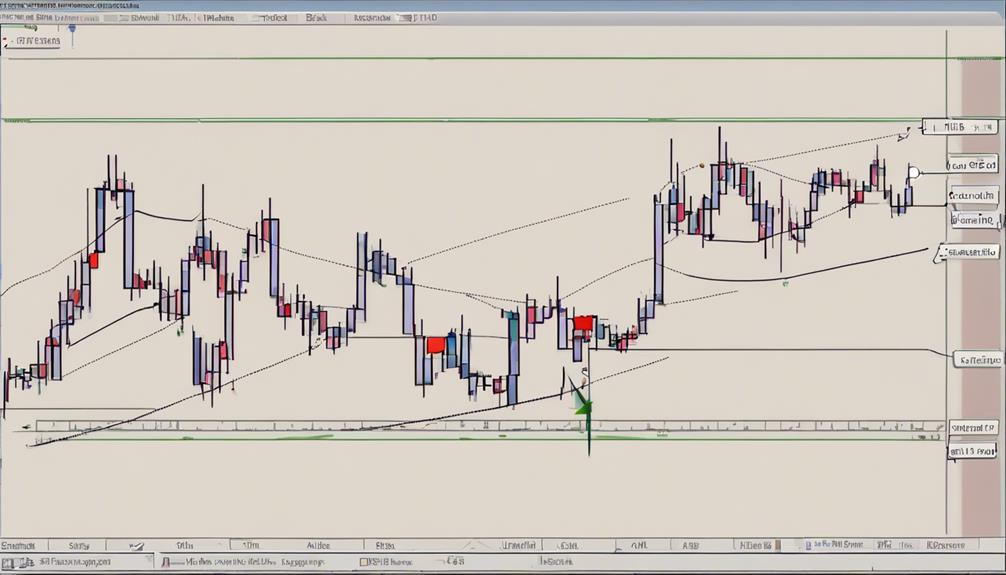
What key characteristics define the Bullish Harami Cross pattern in stock market analysis?
The Bullish Harami Cross is a bullish reversal pattern that signifies a potential trend reversal from bearish to bullish. Here are some key points about this pattern:
- It consists of a large bearish candle followed by a small bullish candle.
- The pattern suggests a weakening of the previous downtrend.
- It indicates a possible shift towards an uptrend in the stock market.
- Traders often seek confirmation through a third candle to validate the reversal signal.
Identifying the Bullish Harami Cross accurately can present profitable trading opportunities due to its reliability in signaling trend reversals.
Bearish Harami Cross
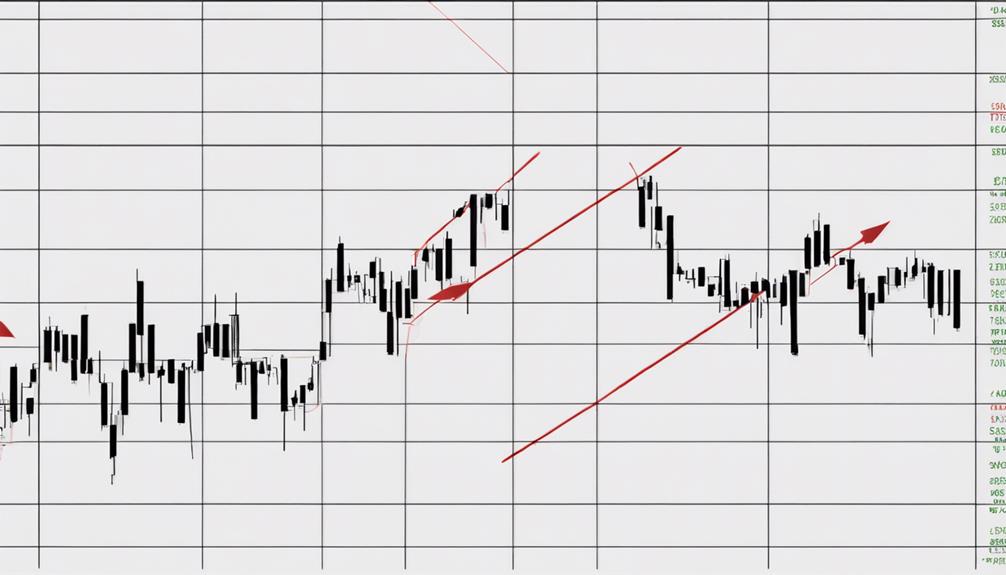
The Bearish Harami Cross pattern is a reliable indicator of potential trend reversals in stock market analysis. It consists of a large bullish candle followed by a small bearish candle that's 'inside' the prior candle. This two-candle pattern suggests a weakening bullish momentum and a possible shift towards bearish sentiment. Traders often seek confirmation signals to validate the Bearish Harami Cross before making trading decisions.
This pattern is especially significant when observed at the end of an uptrend, indicating a possible reversal in price direction. Recognizing the Bearish Harami Cross can provide valuable insights for traders looking to anticipate shifts in market sentiment and adjust their strategies accordingly to capitalize on potential downside movements in stock prices.
Shooting Star
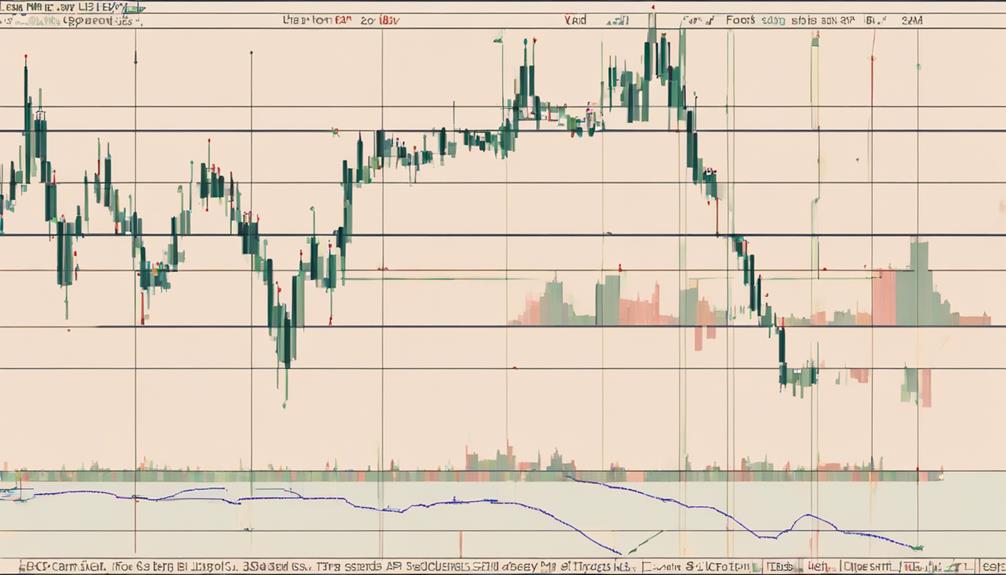
After understanding the Bearish Harami Cross pattern and its implications for potential trend reversals in stock market analysis, the focus now shifts to the bearish candlestick pattern known as the Shooting Star.
Key Points about the Shooting Star:
- The Shooting Star is a bearish candlestick pattern signaling a potential market reversal.
- It features a small body at the top with a long upper wick, resembling a star falling from the sky.
- This pattern suggests that although buyers pushed prices up, selling pressure drove them back down, indicating potential weakness.
- Traders often use the Shooting Star as a signal to consider taking profits or opening short positions.
Doji Candle
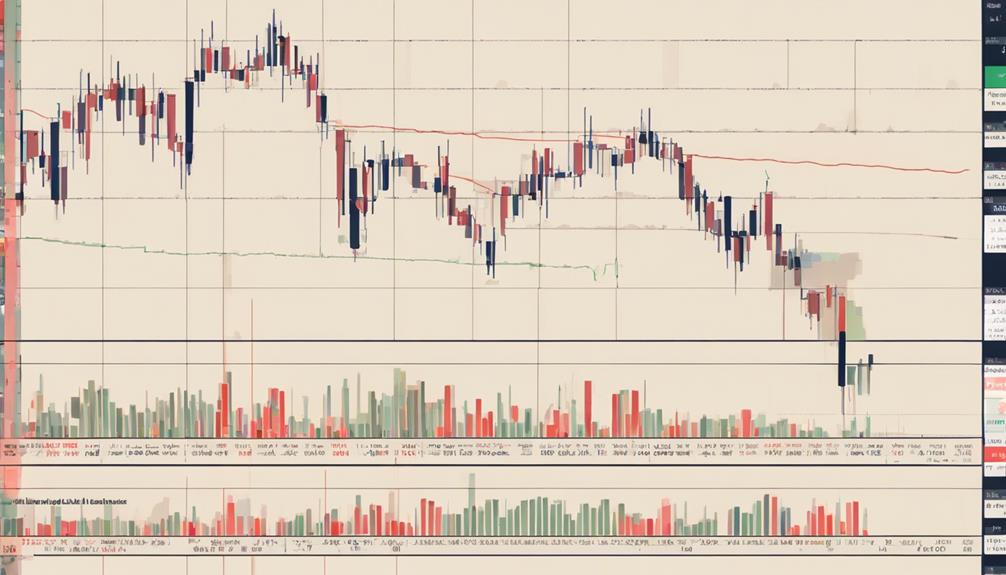
Doji candles, characterized by their equal open and close prices, are pivotal in signaling market indecision, potential reversals, or trend continuations.
These candlesticks, presenting as a horizontal line, offer traders insight into the underlying uncertainty and volatility of the market.
Doji Candle Meaning
Indicating market indecision and potential trend reversals, the Doji candlestick pattern forms when opening and closing prices nearly match, shaping a cross or plus sign. Here's why the Doji candle is significant:
- Market Indecision: Doji signals uncertainty as buyers and sellers reach a balance.
- Trend Reversals: After a strong price movement, a Doji may suggest a possible change in direction.
- Confirmation Needed: Traders often wait for the next candle to confirm the Doji's implications.
- Variations Matter: Long-Legged Doji and Dragonfly Doji offer nuanced insights into market sentiment and the dominance of buyers or sellers.
Understanding the Doji's meaning can help you anticipate shifts in market sentiment and make informed trading decisions.
Doji Candle Formation
With its formation crucial for identifying market sentiment shifts, the Doji candlestick pattern signifies market indecision when open and close prices align closely. This pattern is significant as it can hint at potential trend reversals or continuations within the market.
Traders often use Doji candles to gauge upcoming volatility and make informed decisions. It's essential to wait for confirmation from the following candle to validate the impact of a Doji formation accurately.
Variations like the Long-Legged Doji or Dragonfly Doji offer additional insights into market dynamics, aiding in making more informed trading choices. Understanding the nuances of the Doji candlestick and its variations can provide valuable information for successful trading strategies.
Bullish Harami
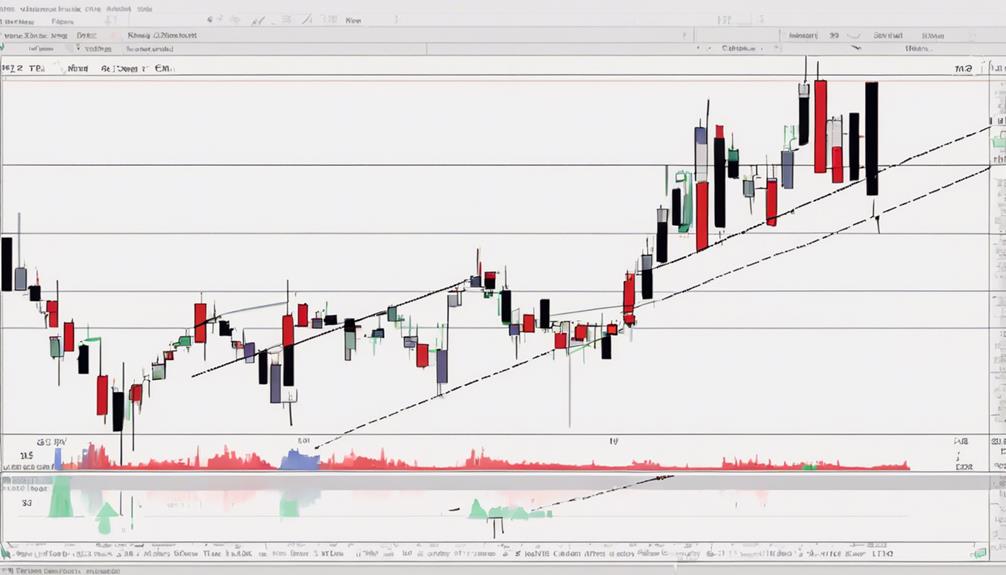
When identifying a Bullish Harami pattern in stock market analysis, observe a two-candle formation consisting of a large bearish candle followed by a smaller bullish candle. This pattern suggests a potential trend reversal from bearish to bullish, with traders seeking confirmation through follow-through bullish price action.
Bullish Harami is considered a reliable bullish reversal pattern when found at the end of a downtrend, indicating a shift in market sentiment from bearish to bullish. This shift provides a buying opportunity for traders looking to capitalize on the changing market dynamics.
Remember to analyze the context in which the Bullish Harami appears, as it can greatly influence the pattern's effectiveness in predicting future price movements.
Spinning Top

Amid market uncertainty, the Spinning Top candlestick pattern emerges as a key indicator of indecision and potential trend shifts. This pattern is characterized by a small body and long upper and lower wicks, signaling a balance between buyers and sellers.
In situations of low volatility or consolidating markets, Spinning Tops often appear, reflecting the lack of a clear direction in price movement. Traders interpret this pattern as a possible signal for a trend reversal or continuation, depending on subsequent price action.
The significance of a Spinning Top lies in its depiction of market indecision, where neither bulls nor bears have taken control. To confirm potential trend changes, traders typically look for validation from the following candlestick patterns.
Are the candlestick patterns for stock market success the same as the ones every day trader must know?
When it comes to stock market success, understanding the best candlestick patterns day trader is crucial. These patterns can provide valuable insights into market trends and potential price movements. Whether you are a seasoned investor or a day trader, knowing and recognizing these patterns can make a significant difference in your trading strategy.
Frequently Asked Questions
What Is the Most Successful Candlestick Pattern?
The most successful candlestick pattern is the Bullish Engulfing pattern. It signifies a strong reversal in market sentiment with a large bullish candle engulfing the previous smaller bearish candle. Traders often utilize it for trend reversals and entry points.
What Is the 3 Candle Rule?
To understand the 3 Candle Rule, watch for three candles in a row signaling a trend change. This method validates market moves, reducing false signals and enhancing decision-making. It encourages patience and confirmation for better trading outcomes.
Which Candlestick Pattern Is Most Reliable for Day Trading?
In day trading, the Inverted Hammer candlestick pattern stands out as one of the most reliable signals for potential bullish reversals after a downtrend. Its success rate of 60% and 1.12% profit per trade make it a valuable tool for traders.
Do Professional Traders Use Candlestick Patterns?
Yes, professional traders extensively rely on candlestick patterns for technical analysis and decision-making. These visual cues on price movement and market sentiment, when combined with other indicators, enhance trading strategies and success rates significantly.
Conclusion
So there you have it, folks! By mastering these 10 best candlestick patterns, you'll practically be a stock market wizard in no time.
Just remember, when you see that Inverted Hammer or Bearish Engulfing pattern, it's like the market is giving you a little wink and nod.
So go forth, armed with this knowledge, and conquer the stock market with confidence and finesse. Happy trading!
